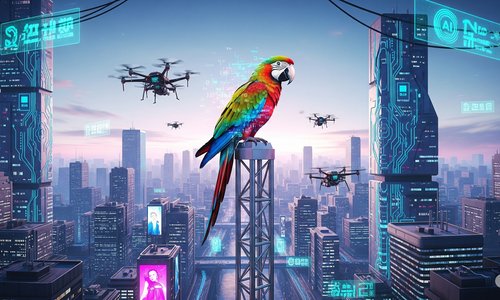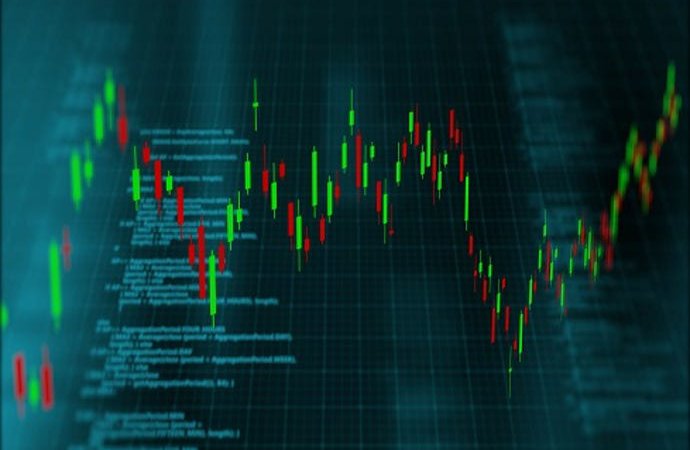
A Promessa e o Perigo da Nova Revolução Digital
A nova corrida tecnológica global levanta uma pergunta urgente: estamos prontos para confiar na inteligência que criamos?

O aumento do foco das empresas na coleta e mineração de dados trouxe um aumento de demanda corporativa para o uso do aprendizado de máquina (ML), como ferramenta crucial para consumo dos dados e para transformação destes dados em informações úteis para as empresas, fato que impulsiona o crescimento da IA nas empresas.
O mais novo movimento é o surgimento do Graph AI, que não reinventa a roda do Machine Learning, porém traz uma nova maneira de analisar vários conjuntos de dados diferentes para inferir o contexto e investigar a correspondência relacional, usando os gráficos para facilitar a visualização destas correlações.
O que é Graph AI?
O Graph AI é um novo movimento que encapsula o melhor das tecnologias gráficas no mundo atual com Inteligência Artificial (IA).
Ele permite que as organizações concluam fluxos de trabalho de ponta a ponta em uma única plataforma, uma vez que é fortalecido por um mecanismo de computação gráfica escalável e elimina a movimentação desnecessária de dados.
Em síntese, Graph AI é a ciência de usar ML em gráficos para focar nas relações entre variáveis com o objetivo de obter insights mais profundos. Ao usar Graph AI com algoritmos de clustering, particionamento ou PageRank alguns problemas tornam-se mais fáceis de resolver. Isso acontece quando problemas em que centralidade, conectividade e análise de caminho desempenham um papel fundamental na análise.
Cabe destacar aqui os quatro pilares do Graph AI, que são: consulta de gráficos, mineração de gráficos, análise de gráficos e IA de gráficos.
Onde o Graph AI obtém seus dados?
Em qualquer lugar, dependendo da aplicação. Podem ser dados meteorológicos ou dados transacionais relacionados a clientes específicos. Podem ser redes sociais que podem ser exploradas para insights sociais. Pode ser movimento de tráfego, conteúdo, dados científicos ou IoT. Pode ser todas essas coisas combinadas e correlacionadas para produzir IA baseada em gráficos contextuais.
O que a Graph AI pode fazer por você?
A maior conquista da Graph AI é sua capacidade preditiva e prescritiva. Por exemplo, o Graph AI pode revelar exatamente como ocorreu uma violação de segurança cibernética e quais medidas as empresas podem tomar para impedir que outros ataques sejam bem-sucedidos.
Outro bom exemplo, inclui recursos para segmentar e microssegmentar clientes e suas preferências. A Netflix, por exemplo, pode identificar a categoria de filme que a pessoa A gosta e aqueles que a pessoa B gosta para recomendar filmes para ambos ou uma terceira pessoa que ela sabe que pode gostar. Embora este exemplo possa parecer trivial, é aplicável para emitir recomendações precisas para segmentação de clientes em verticais como serviços financeiros, por exemplo, com base em fatores como se eles estão em áreas rurais ou urbanas, ou segmentações não óbvias relacionadas aos hábitos de consumo dos clientes. No primeiro caso, pode-se empregar IA gráfica para encontrar pontos em comum entre eles para campanhas de marketing abrangentes que atraem ambos ou um terceiro grupo com residências em ambas as áreas.
Podemos acrescer ainda, que empresas como Pinterest, Uber, eBay e Google relataram melhorias significativas em áreas centrais como recomendações, detecção de fraudes e modelos de previsão após a incorporação das Redes Neurais Gráficas (GNNs).
Em suma, o Graph AI pode ser usado em tudo.
Palavras Finais
É apenas uma questão de tempo até que os gráficos se tornem um método padrão de análise de dados para obtenção de insights operacionais.
Existem várias razões pelas quais o Graph AI está pronto para crescer em importância no futuro próximo. Primeiro, as empresas estão cada vez mais prontas: como observamos acima, dados operacionais e dados de eventos são onipresentes, e as empresas já possuem sistemas para coletá-los e armazená-los. Da mesma forma, como já apresentado, a computação agora também está mais acessível do que nunca.
Em segundo lugar, empresas e pesquisadores estão relatando que o Graph AI é uma técnica de IA significativamente superior para seus casos de uso. As equipes estão demonstrando que os gráficos podem fornecer melhores respostas a perguntas comportamentais, bem como fornecer a base para sistemas de recomendação e detecção de fraudes mais inteligentes.
Por fim, como observamos ao longo deste post, os primeiros adeptos do Graph AI terão uma vantagem em seus mercados e poderão se beneficiar mais rapidamente de novas ferramentas.
Presidente da I2AI, Coordenador da Comissão de Tecnologia da Informação Quântica pela ABNT, Speaker, Pesquisador e Coronel do Exército Brasileiro. É um profissional extremamente qualificado e experiente em diferentes áreas. Possui mestrado em Governança, Tecnologia e Inovação, pela Universidade Católica de Brasília, bem como especializações em Ciências Militares, Bases Geo-Históricas, Engenharia de Sistemas, Ciência de Dados, Inteligência Artificial e Educação a Distância, além de vários MBAs, como em Administração Imobiliária, Gestão Pública Federal, Inteligência Artificial, Gestão de Projetos e Nova Lei de Licitações.
Além disso, é membro da Sociedade Brasileira de Computação, bem como do Grupo de Excelência em Processo Prospectivo e Construção de Cenários - CRA-SP.

A nova corrida tecnológica global levanta uma pergunta urgente: estamos prontos para confiar na inteligência que criamos?

Por que dominar a IA será a nova alfabetização do século XXI

Conselhos de Administração devem evoluir da supervisão reativa para a antecipação estratégica, frente à crescente complexidade e volatilidade dos ambientes de negócios.

De 14 a 25 de julho, reserve suas manhãs das 08h00 às 09h30 para participar da tradicional Maratona I2AI! Uma jornada intensa com debates e palestras sobre temas essenciais: Ética,